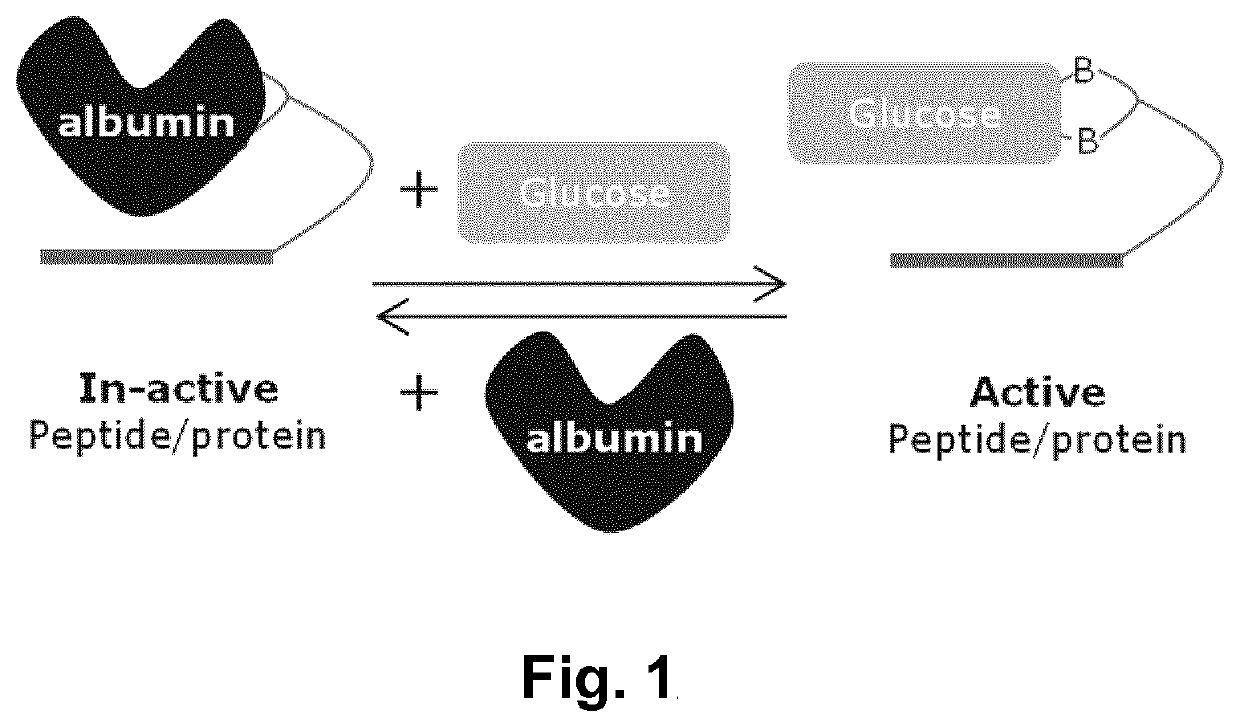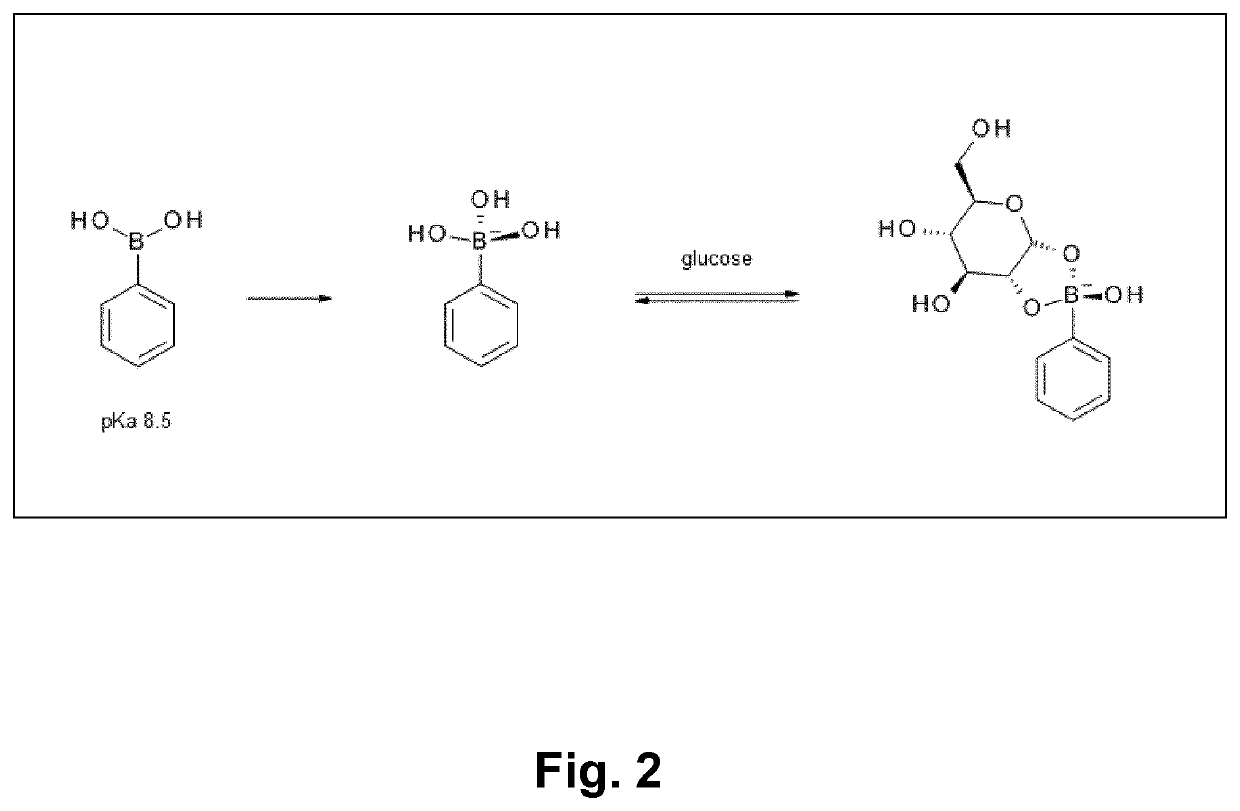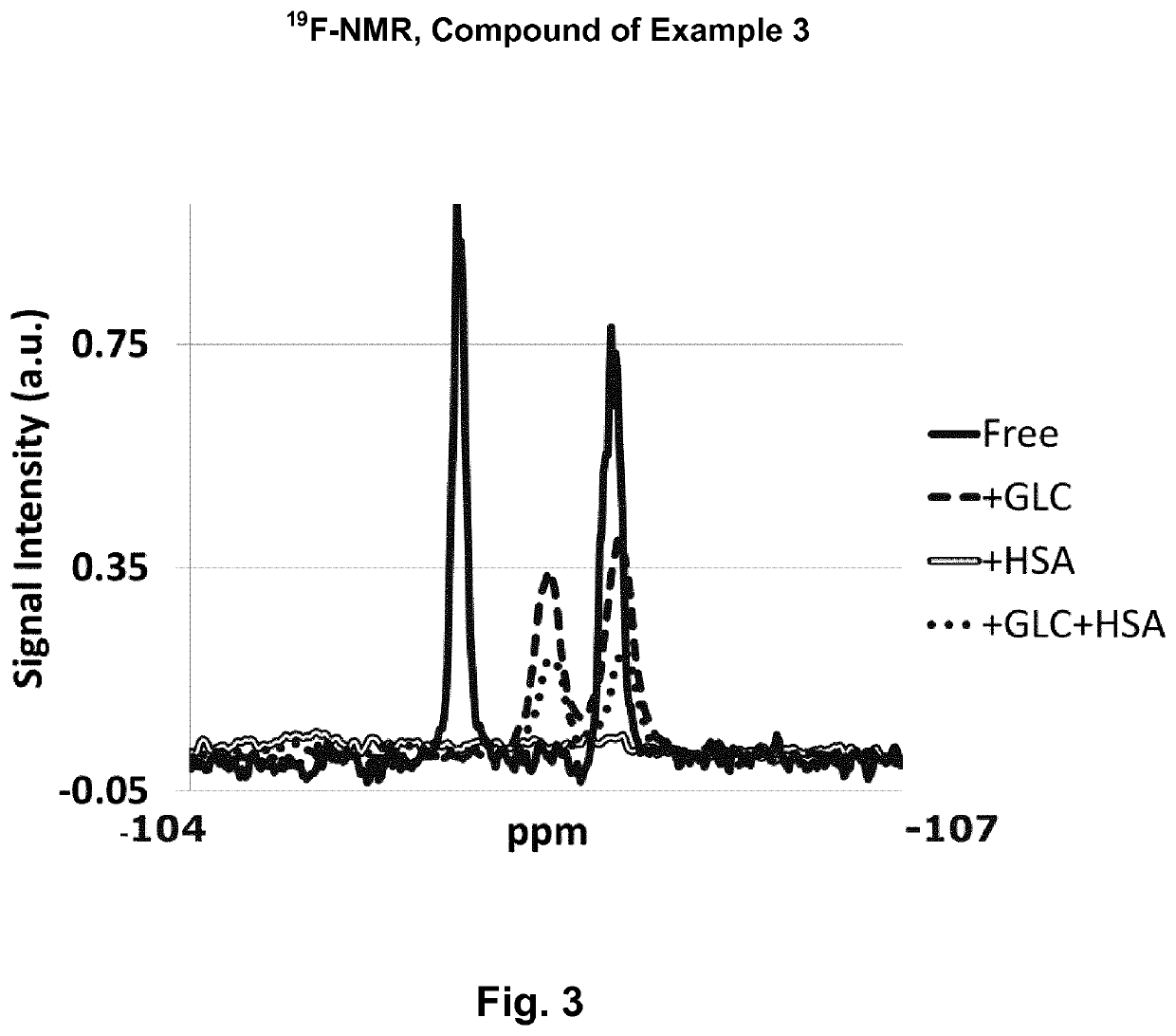Glucose-sensitive albumin-binding derivatives
a technology of albumin and diboron, which is applied in the field of diboron compounds, can solve the problems of low blood glucose values, not always desirable properties for other applications, and not particularly well suited to attachment to protein and peptide-based drugs, and achieves weaker glucose-lowering activity of insulin and blood glucose levels
- Summary
- Abstract
- Description
- Claims
- Application Information
AI Technical Summary
Benefits of technology
Problems solved by technology
Method used
Image
Examples
example 1
3,5-Bis((4-borono-2-fluorobenzamido)methyl)benzoic acid
[0671]
[0672]3,5-Bis((4-borono-2-fluorobenzamido)methyl)benzoic acid was synthesized according to the reaction schemes shown in Chem. 1 and Chem. 2 and following the procedure described below.
[0673]3,5-Dimethylbenzoic acid (4, 27.6 g, 18.4 mmol) was suspended in methanol (80 mL) and treated with concentrated sulfuric acid (8 mL). The mixture was refluxed for 2 days. After neutralization with sodium carbonate (50 g), the mixture was dissolved in water (250 mL) and extracted with diethyl ether (2×300 mL). The organic phases were dried over anhydrous sodium sulfate, filtered and evaporated to dryness affording methyl 3,5-dimethylbenzoate 5 as pale yellow oil.
[0674]Yield: 29.3 g (97%).
[0675]1H NMR spectrum (300 MHz, CDCl3, δH): 7.67 (s, 2H); 7.19 (s, 1H); 3.91 (s, 3H); 2.37 (s, 6H).
[0676]A mixture of the above methyl 3,5-dimethylbenzoate (5, 29.3 g, 178 mmol), N-bromosuccinimide (NBS, 111 g, 623 mmol) and a spatula of azobisisobutyro...
example 2
3,5-Bis((4-borono-3-fluorobenzamido)methyl)benzoic acid
[0696]
[0697]3,5-Bis((4-borono-3-fluorobenzamido)methyl)benzoic acid was prepared similarly to the compound of Example 1 from 4-borono-3-fluorobenzoic acid.
example 3
N,N′-bis(4-borono-3-fluorobenzamido)-N-ethyl-glycine amide
[0698]
[0699]N,N′-bis(4-borono-3-fluorobenzamido)-N-ethyl-glycine amide was prepared similar to the compound of Example 5 from 4-borono-3-fluorobenzoic acid.
PUM
| Property | Measurement | Unit |
|---|---|---|
| pKa | aaaaa | aaaaa |
| displacement constants | aaaaa | aaaaa |
| pKa | aaaaa | aaaaa |
Abstract
Description
Claims
Application Information
 Login to View More
Login to View More - R&D
- Intellectual Property
- Life Sciences
- Materials
- Tech Scout
- Unparalleled Data Quality
- Higher Quality Content
- 60% Fewer Hallucinations
Browse by: Latest US Patents, China's latest patents, Technical Efficacy Thesaurus, Application Domain, Technology Topic, Popular Technical Reports.
© 2025 PatSnap. All rights reserved.Legal|Privacy policy|Modern Slavery Act Transparency Statement|Sitemap|About US| Contact US: help@patsnap.com



